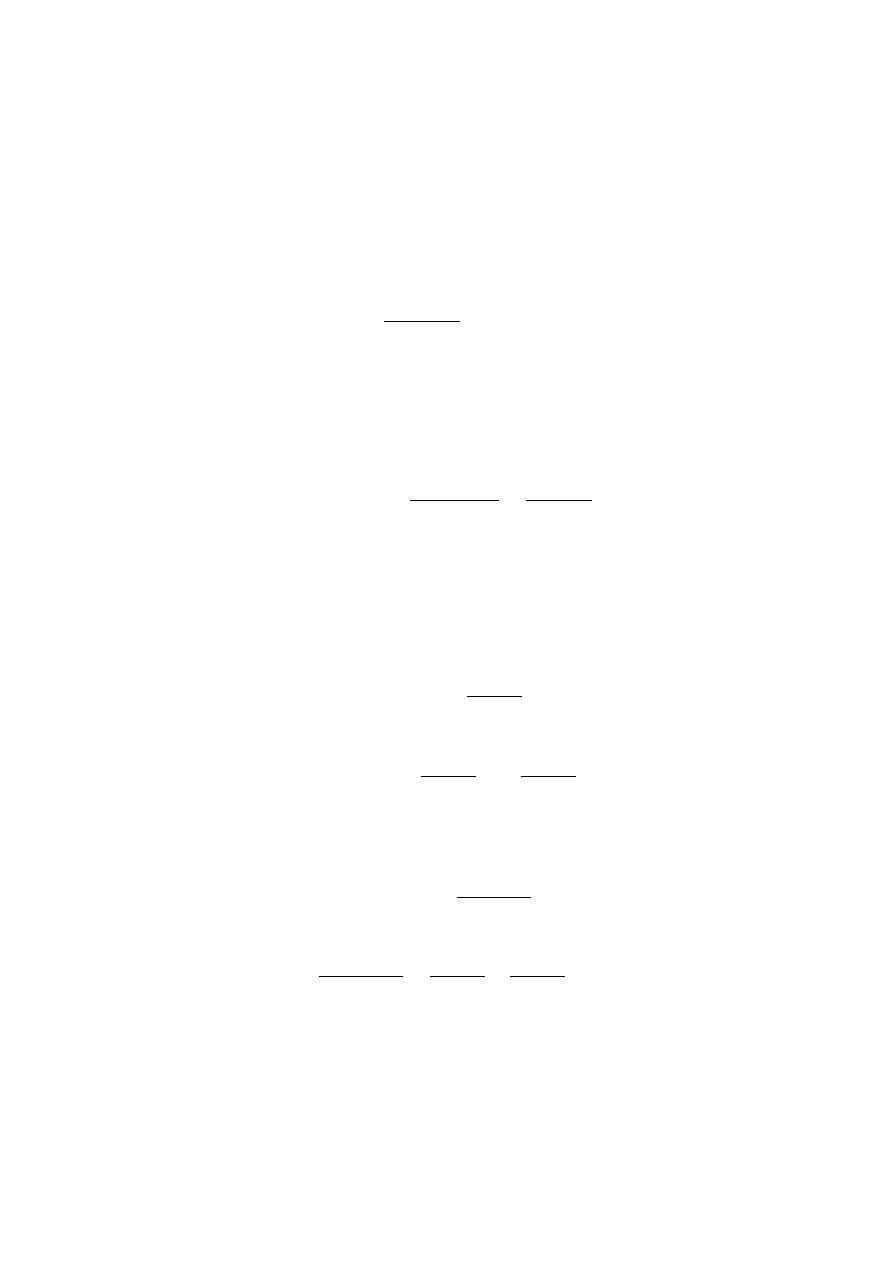
Math 4606. Fall 2006.
Solutions to Homework 3
Section 1.3.
Problem 1c. Let
f (x, y) =
x
4
y
4
(x
2
+ y
4
)
3
, for (x, y) 6= (0, 0).
Show that lim
(x,y)→(0,0)
f (x, y) does not exist.
Solution. This problem was solved in class. Briefly,
f (0, y) = 0, for all y 6= 0.
For c ∈ R, y 6= 0,
f (cy
2
, y) =
c
4
y
12
y
12
(c
2
+ 1)
3
=
c
4
(c
2
+ 1)
3
.
Take, for example, c = 1 we have
lim
y→0
f (0, y) 6= lim
y→0
f (y
2
, y),
while lim
y→0
(0, y) = (0, 0) = lim
y→0
(y
2
, y).
Problem 2. Show that lim
(x,y)→(0,0)
f (x, y) = 0.
a.
f (x, y) =
x
2
y
2
x
2
+ y
2
.
Solution. For (x, y) 6= (0, 0), we have
0 ≤ f (x, y) = x
2
y
2
x
2
+ y
2
≤ x
2
y
2
+ x
2
x
2
+ y
2
= x
2
.
Since lim
(x,y)→(0,0)
x
2
= 0, then by the squeezing property we obtain
lim
(x,y)→(0,0)
f (x, y) = 0.
b.
f (x, y) =
3x
5
− xy
4
x
4
+ y
4
.
Solution. For (x, y) 6= (0, 0), we use the triangle inequality:
0 ≤ |f (x, y)| =
|3x
5
− xy
4
|
x
4
+ y
4
≤
3|x|x
4
x
4
+ y
4
+
|x|y
4
x
4
+ y
4
≤ 3|x| + |x| = 4|x|.
Since lim
(x,y)→(0,0)
4|x| = 0, then by the squeezing property we obtain
lim
(x,y)→(0,0)
|f (x, y)| = 0. Therefore lim
(x,y)→(0,0)
f (x, y) = 0.

2
Problem 6. Let
f (x) =
x
if x is rational
0
if x is irrational.
a. Show that f is continuous at 0.
Solution. Note that f (0) = 0. Let ε > 0 be arbitrary. Take δ = ε.
Let x ∈ R such that |x| < δ.
If x is rational then |f (x) − f (0)| = |x − 0| = |x| < δ = ε.
If x is irrational then |f (x) − f (0)| = 0 < ε.
In both cases, we have |f (x)−f (0)| < ε whenever |x| < δ. Therefore,
f is continuous at 0.
b. Show that f is discontinuous at any point a 6= 0.
Solution. Let a 6= 0.
Case 1: a is rational, then f (a) = a. Take ε
0
= |a| > 0. Let δ > 0
be arbitrary. Choose x
δ
to be an irrational number in the interval
(a − δ, a + δ), then we have |x
δ
− a| < δ and
|f (x
δ
) − f (a)| = |0 − a| = |a| ≥ ε
0
.
Therefore f is not continuous at a.
Case 2: a is irrational, then f (a) = 0. Take ε
0
= |a|/2 > 0. Let
δ > 0 be arbitrary. Choose x
δ
to be a rational number in the interval
(a − δ, a + δ) ∩ (a − ε
0
, a + ε
0
), then we have |x
δ
− a| < δ. Also,
|x
δ
− a| < ε
0
, we obtain
|f (x
δ
) − f (a)| = |x
δ
| ≥ |a| − |x
δ
− a| ≥ |a| − ε
0
= |a|/2 = ε
0
.
Therefore f is not continuous at a.
Problem 7. Let f (x) = 1/q if x = p/q, where p, q are integers having
no common factors, q > 0, and f (x) = 0 if x is irrational.
a. Show that f is discontinuous at rational numbers.
Solution. Let a = p/q be a rational number where p, q are as above.
Let ε
0
= 1/q > 0. Let δ > 0 be arbitrary. Choose x
δ
to be an irrational
number in the interval (a − δ, a + δ) then we have |x
δ
− a| < δ and
|f (x
δ
) − f (a)| = |0 −
1
q
| =
1
q
= ε
0
.
Therefore f is discontinuous at a.

3
b. Show that f is continuous at irrational numbers.
Solution. Let a be an irrational number, then f (a) = 0. We need to
show that f is continuous at a. Note that for any irrational number
x, we have |f (x) − f (a)| = 0 which is less than any positive number ε.
Therefore it suffices to show that
(1)
∀ε > 0, ∃δ > 0, ∀x = p/q ∈ Q, |x − a| < δ =⇒ |1/q| < ε,
where p, q are integers having no common factors and q > 0. We will
prove (1) by contradiction method. Suppose (1) is not true, then the
negation of (1) holds:
(2)
∃ε
0
> 0, ∀δ > 0, ∃x
δ
= p
δ
/q
δ
∈ Q, |x
δ
− a| < δ and |1/q
δ
| ≥ ε
0
.
For k ∈ N, take δ = 1/k in (2), then there is x
k
= p
k
/q
k
∈ Q such
that
(3)
|x
k
− a| < 1/k and |q
k
| ≤ 1/ε
0
.
By (3) and triangle inequality,
|p
k
|/|q
k
| = |x
k
| ≤ |a| + |x
k
− a| ≤ |a| + (1/k) ≤ |a| + 1.
This and (3) yield |p
k
| ≤ (|a| + 1)|q
k
| ≤ (|a| + 1)/ε
0
. Therefore, the
integers p
k
and q
k
are bounded, hence each set
A = {p
k
, k ∈ N},
B = {q
k
, k ∈ N}
has only finitely many elements. Consequently, the set S = {p/q, p ∈
A, q ∈ B} has only finitely many elements. Note that x
k
∈ S for all k
and S ⊂ Q. Since a is irrational, a 6∈ S. For each x ∈ S, |a − x| > 0.
Since S is finite, then d = min{|a − x| : x ∈ S} > 0. Therefore, for any
k, |x
k
− a| ≥ d, this contradicts the fact that |x
k
− a| ≤ 1/k → 0 as
k → ∞. Thus, we must have (1). The proof is complete.
